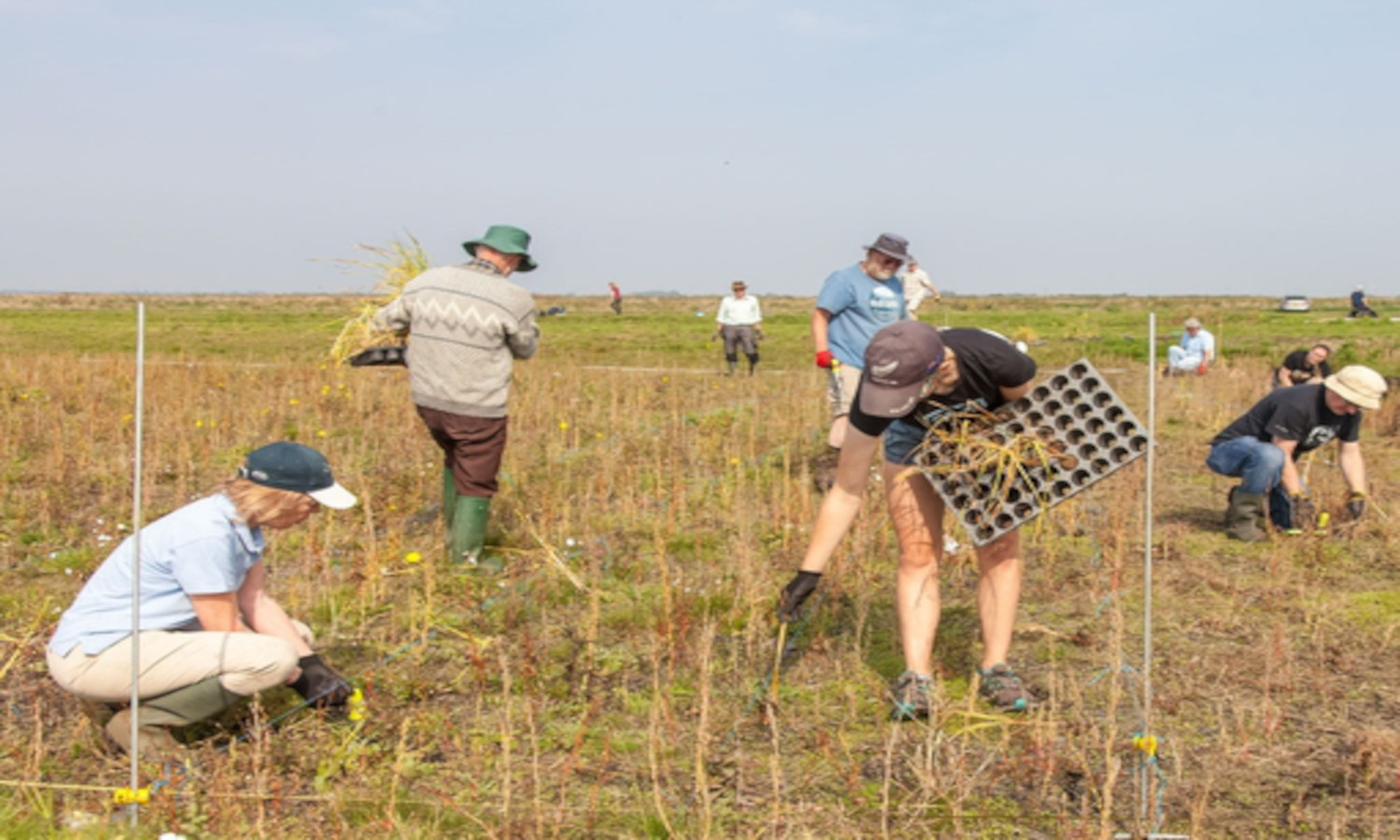The Water Works project is trialing field-scale wet farming, also known as paludiculture, in the Fens region of Cambridgeshire, United Kingdom. The goal is to enhance sustainable farming practices and sequester carbon through the rewetting of peatlands.
Water Works is a collective effort of the Great Fen Project by The Wildlife Trust for Bedfordshire, Cambridgeshire and Northamptonshire, the University of East London, the Centre for Ecology & Hydrology, and Cambridgeshire ACRE, as well as countless farmers and community members in the region. It is funded by the People’s Postcode Lottery Dream Fund.
The project site is in what is called the bathtub of Britain, where the surrounding farmland is as much as four meters below sea level. The area was originally a lake but was drained for agriculture in the 1850s. Currently, water is pumped out from the area, both to stop flooding and to make the land suitable for conventional dry farming methods.
This strategy, however, can have negative consequences for the land. Soil erosion is becoming a growing problem as the Fens loses 4.5 million cubic meters of peat—the equivalent volume to nearly two olympic-size swimming pools—every year. This releases stored carbon dioxide back into the atmosphere, contributing to elevated levels of greenhouse gas emissions.
“Given that we are in a climate emergency, peat represents our biggest soil-carbon store by far, while peat soils subject to arable agriculture represent our biggest source of carbon emissions from land use,” Richard Lindsay, Head of Environmental and Conservation Research at University of East London, tells Food Tank.
Restoring peat through the process of rewetting requires a return of the natural flow of water to the land. The reversal of centuries-old drainage mechanisms encourages rainfall to saturate the soil, optimizing ecosystem health.
Project leaders believe that rewetting this nutrient-dense soil is a promising solution to escalating emissions and environmental challenges. According to the U.N. Environment Programme, peatlands can store twice as much carbon as the world’s forest.
“Through the Water Works project we expect to see improved water quality, increased carbon removal from the atmosphere, and a reduction in soil losses,” Jack Clough, Research Assistant with the Sustainability Research Institute at the University of East London, tells Food Tank. “We also hope to see an increase in biodiversity, as the wet farming area will support a wider range of bird and insect species.”
The Water Works project is also expected to diversify the local food system by introducing products specific to wetlands. These include sweetgrass, watercress, wild celery, and meadowsweet. The plants which provide water filtration to the paludiculture fields are primarily reeds, which are used widely in the construction industry, and bulrush, which has many end uses including as insulation, bioenergy, bioethanol production, livestock fodder, and biodegradable food packaging.
For paludiculture to become popularized, Lindsay tells Food Tank, “there is a need to be developing crops, developing machinery, developing infrastructure, and developing markets [suitable for wet farming], all of which will take time. A key factor will be marketing—making clear to customers that products have come from paludiculture—because there is actually a great and very positive story to tell.”
Through education, Lindsay and others hope to share this message with communities and promote land conservation, climate change mitigation, and food security.
“The peat is a finite resource which is being lost through current dry farming practices,” Great Fen project manager Kate Carver tells Food Tank. “Current patterns of food production will in time be adversely affected if nothing is done to protect the peat. We need future-proof farming and food production.”
Photo courtesy of Alistair Grant via The Wildlife Trusts.











